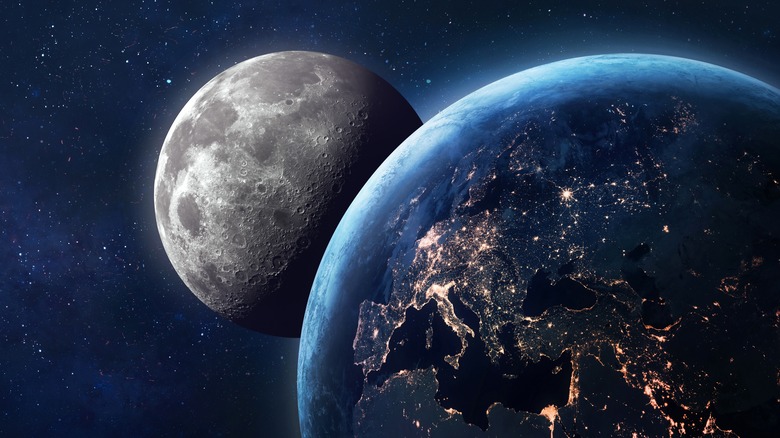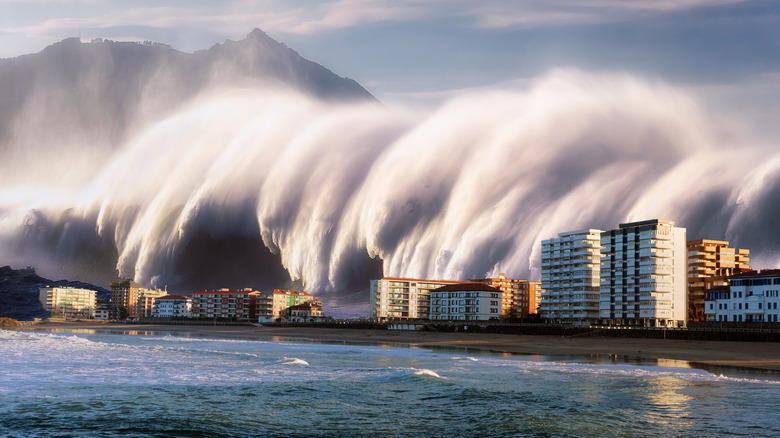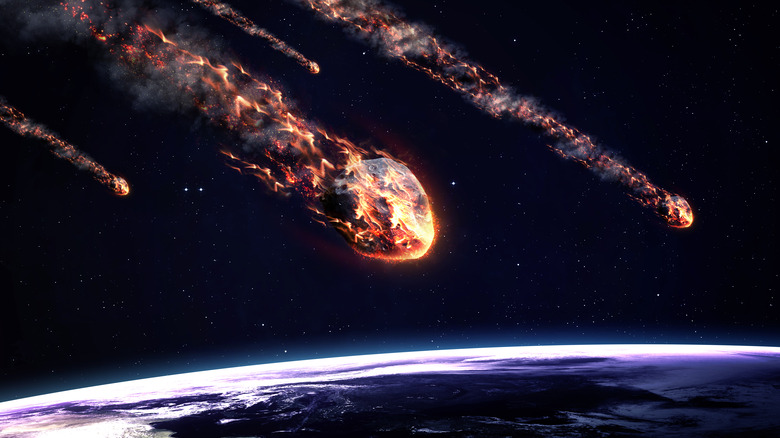It Would Not Be As Cool As You Think If Earth Had Two Moons
Looking up at the stars on a clear night, one unmissable sight is Earth's beloved moon. And in this case, the fact Earth only has one moon is exceptional, given the fact that it is the only planet in the solar system without multiple moons orbiting it, according to NASA. There are more planets in the solar system that have no moons — Mercury and Venus — than Earth's lonely moon (via NASA). Yet that might possibly raise the question: What if Earth had two moons?
It would definitely dramatically change life on Earth, and perhaps not all for the better, either. As Insider points out, two moons would bring larger tides, which would change the shape of our shorelines and beaches. There's also the possibility that the two moons might collide with each other. Life on Earth would be completely different from what it is now. But what would that all exactly look like?
Changes in sea level
The most dramatic change if the Earth had two moons would be the effect on Earth's tides and, therefore, on the planet's shorelines. Our present singular moon has the largest impact on Earth's tides, due to the gravitational tugging on the Earth as the moon orbits the planet, according to NASA. If there were two moons orbiting Earth — specifically, two identical moons — the change would be so drastic that lots of famous cities and areas presently part of life on Earth wouldn't exist.
Cities like New York City, Shanghai, London, and others would be completely immersed underwater, as Insider says. According to Science Focus, Earth would also have more frequent tsunamis and possibly more earthquakes, which would devastate much of the planet. The effects would not just be felt on Earth's oceans; bear in mind that the moon also affects the length of Earth's day (per Insider).
Longer days, brighter nights
Right now, the moon is actually leaving Earth's orbit by about four centimeters every year. However, this causes a drag on Earth's own rotation, thus making the days just a tiny bit longer, with approximately one additional second every 40,000 years. If there were two moons, this effect would be expanded, and it is believed that after a couple of million years, Earth's day would be 28 hours long, according to Insider.
However, the second moon would be constantly pulled by the gravitational force of both Earth and the first moon, which would cause loads of volcanic eruptions that would make the second moon resemble Jupiter's moon, Io, with a smooth surface that would shine in the night sky, according to PHYS. The effect of two moons would also change how bright the night sky is, affecting how life would evolve back on Earth, especially for nocturnal animals, something PHYS also claims.
Twist of fate
It seems that the moon may be something of a jealous ex when it comes to orbiting Earth because, at the end of the day, a second moon would not have the best of fates. As the first moon continues to exit Earth's gravitational pull, it would bring the second moon with it, and eventually the two moons would crash into each other, according to Insider. The effects would be catastrophic.
As the duo makes contact with each other, they would instantly explode, causing debris, meteoroids, and lava to be scattered across space, being visible on Earth, and eventually hitting Earth, causing craters as big — and bigger — as the asteroid that made the dinosaurs extinct (via Insider). Eventually, a ring of debris, meteoroids, and asteroids would wrap around the planet, and at some point — ironically — form back into one singular moon. Maybe Earth just isn't meant to have more than our lonely — but beloved — moon in its orbit after all.



